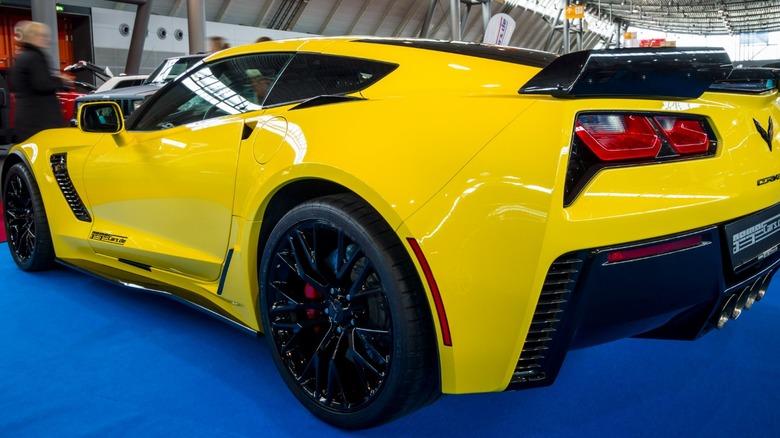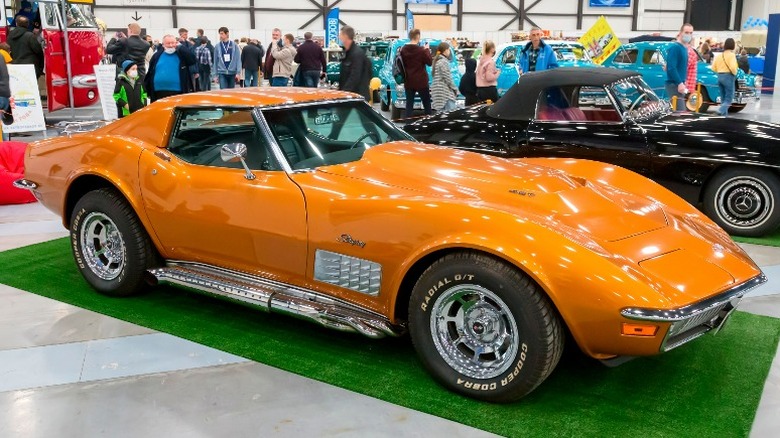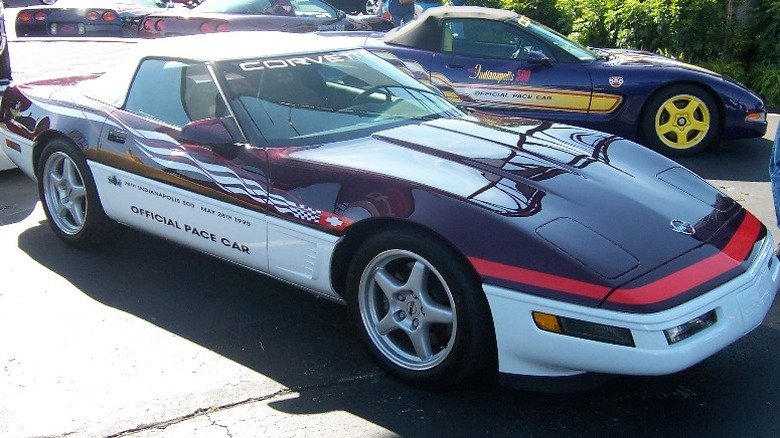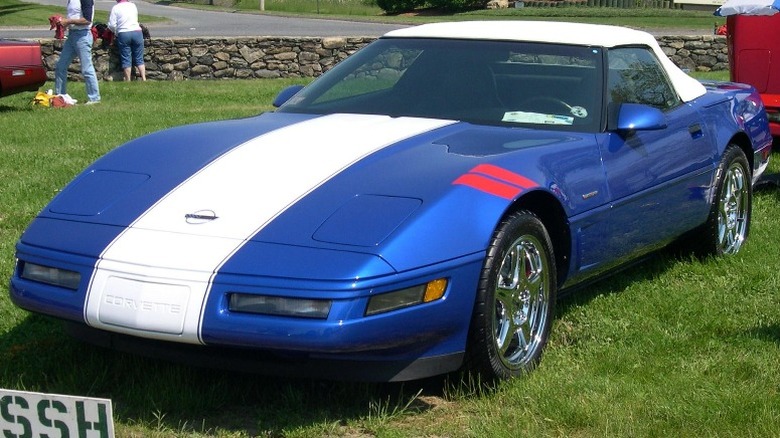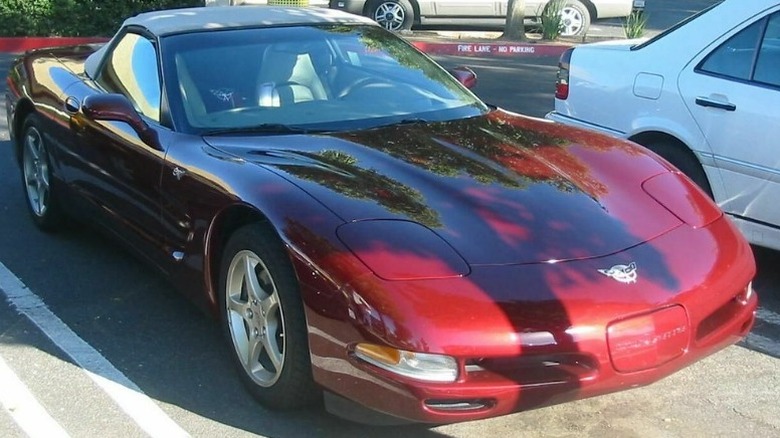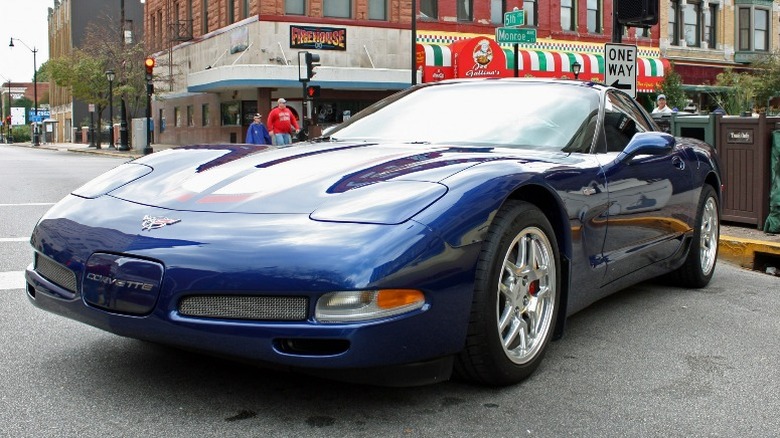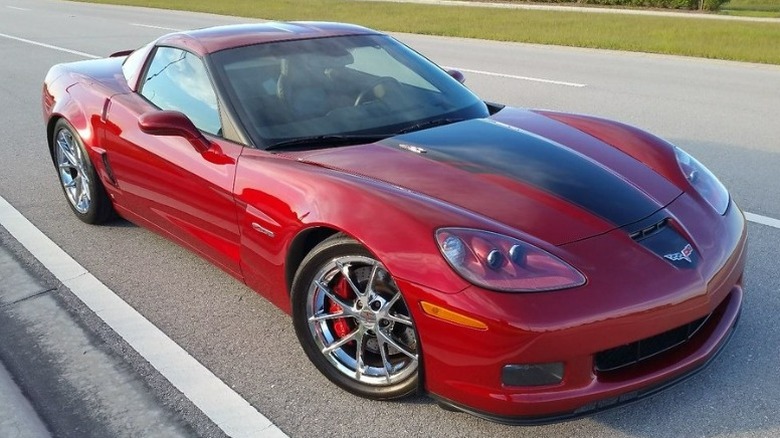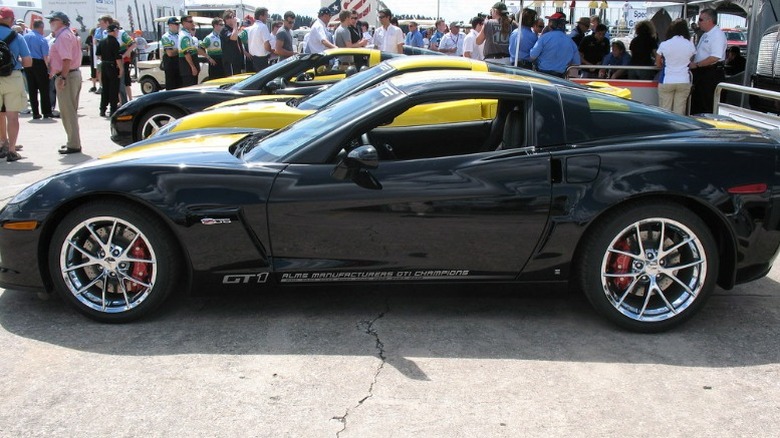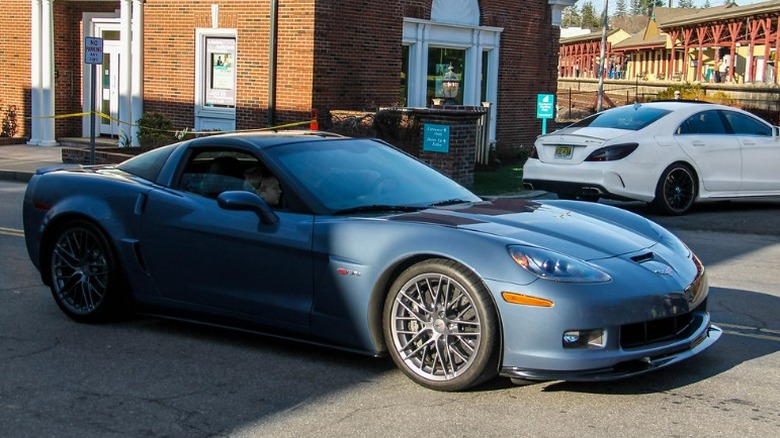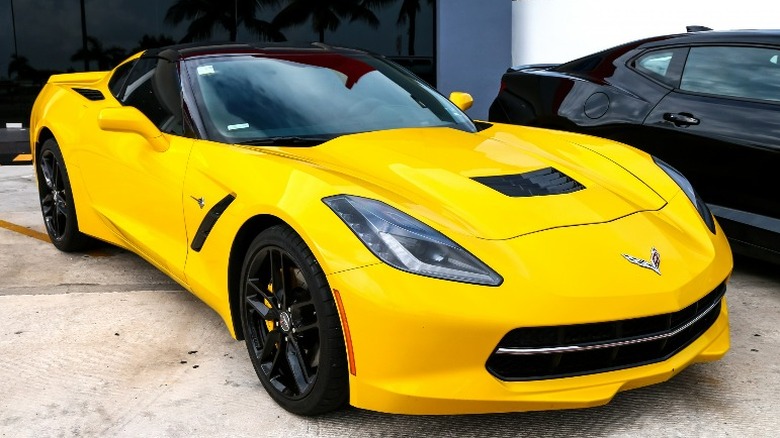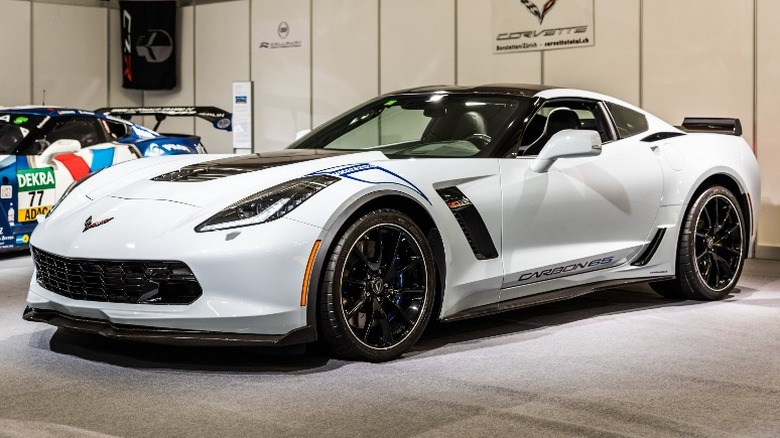The 10 Best Special Edition Corvettes Ever Made
The Chevrolet Corvette is an icon and one of the greatest American cars of all time. Since its introduction in 1953, the sports car has been a leader in performance, speed, and technology.
There have been many innovations over Corvette's nearly 70-year history, such as independent rear suspension released in 1963 on the split-window C2. In 1990 Chevrolet introduced the double overhead cam design on the ZR-1 Corvette with the 5.7-liter all-aluminum LT5 V8 engine. And in 1997, Corvette made a leap in technology when Chevrolet built the C5 with a new construction process known as hydroforming that eliminates welding of the frame rails. The resulting ridged frame allowed construction of the convertible without the usual stiffening components required for a convertible's design.
These innovations and others kept Corvette's performance on par with European sports car rivals, but at a fraction of the price. While the Corvette has typically been more expensive than many other cars, it has always been within reach for the average enthusiast that dreams of owning a high-performance sports car. Furthermore, while the most recent C8 Corvette price might be out of reach for many, it still offers supercar performance for less than six figures.
Throughout Corvette's long history, Chevrolet has celebrated key design achievements and significant milestones with special editions. There have been over 75 in total, and most have been affordable for the average buyer. Here are the ten best special edition Corvettes ever made.
1969 Corvette Stingray L88
Most car enthusiasts agree the 1960s are the golden era of American muscle cars. American car manufacturers offered big-block V8s delivering drag-racing performance in a street vehicle, all at an affordable price. While the 1960s Corvettes are most often classified as high-performance sportscars, they offer performance characteristics on par with most muscle cars, and the famed L88 was the top performer.
Corvette design in the late 1960s was exceptional. The now-classic shark body with its bulging fenders, wide rear haunches, sloping front end, and side gills made the Vette, with its flowing curves, one of the most seductive cars of the era. While the C3 (1968–1982) enjoyed immense popularity, its rarest version, the L88, has gained legendary status with enthusiasts and collectors.
In 1969, Chevrolet made only 116 Corvette Stingray L88 models, promoting them to race teams rather than the average buyer. The limited-edition Vette featured three primary differences from the standard C3 Stingray: an interior without options, a high-rise hood, and the highly modified version of the 457-cubic-inch V8 engine generating nearly 580 horsepower. The L88 delivered power to the rear wheels via a four-speed manual transmission, accelerating to 60 mph in a mere 5.5 seconds on its way to an estimated top speed of 170 mph. The Stingray L88 added over $1,000 to the $4,781 base price of a Corvette but has appreciated significantly since its release in 1969. Prices at auction vary from $550,000 to $750,000.
1995 Corvette Indy 500 Pace Car Replica
In 1995, the Corvette paced the Indianapolis 500 for the third time in the car's history. To commemorate the honor, Chevrolet built 527 replicas of the convertible. The automaker painted each with the pace car's striking purple and white colors and installed a white soft top, leather interior, and special Indy 500 graphics. The Vette rode on five-spoke ZR-1 alloy wheels and 275/40×17 Goodyear GSC tires.
The Corvette Pace Car that led the start of the 79th Indianapolis 500 was a stock LT1 Corvette Convertible, fitted with the mandatory safety features required by the Indianapolis Motor Speedway. Chevrolet equipped the car with a camera featuring strobe lights, an onboard fire suppression system, a five-point safety harness system, and a special rollbar. Chevrolet built only three pace cars for the race, equipping two with an automatic transmission and the third with a six-speed manual gearbox.
The 2-door convertible Pace Car Replica boasted a 5.7-liter V8 generating 300 horsepower and 340 lb-ft of torque. Fitted with the 4-speed automatic transmission, the car accelerated from 0 to 60 mph in 5.8 seconds, reached the quarter-mile in 14.1 seconds, and achieved a top speed of 163 mph. Chevrolet built all the 1995 Pace car Special Corvettes in March and April of the same year, and the first 50 cars featured all-black interiors. The Indy 500 Pace Car Replica option added $2,816 to the $36,785 base price of the 1995 Corvette. Today, a Pace car in good condition sells for $10,000 to $15,000.
1996 Corvette Grand Sport
In 1996, Chevrolet offered the Grand Sport in a Coupe ($3250 option) and a Convertible ($2880 option), limiting production to just 1000 units, 190 convertibles. All versions included the LT4 engine, available with the 6-speed manual transmission, and were painted with a special Admiral Blue. An Arctic White racing stripe ran down the car's center, and two red hash marks over the left front fender commemorated the original 1963 Grand Sport Corvettes.
The Grand Sport's 5.7-liter LT4 engine produces 330 bhp at 5800 rpm and 340 lb-ft of torque at 4500 rpm. The output is 30 horsepower more than the LT1, rated at 300 hp at 5000 rpm and 335 lb-ft of torque at 3600 rpm. The additional horsepower came from higher-flow aluminum heads, larger valves, a more aggressive camshaft, higher-compression pistons, roller rocker arms, and new high-flow fuel injectors. While the extra output of the LT4 (over the LT1) is not close competition for the ZR-1's 405-horsepower LT5, the additional "pop" is noticeable, mainly through third gear.
Perhaps the best performance improvement of the 1996 Corvette Grand Sport over the standard six-speed Corvette comes from the coupe's front-mounted 275/40ZR-17 Goodyear radials and the 315/35ZR-17s in the rear. The convertible trim has 255/45ZR-17s in front and 285/40ZR-17s in back, like standard Corvette coupe and convertible models. The Grand Sport option featured front brake calipers finished in a special gloss black with the "Corvette" name in bright aluminum. The larger tires gave the Grand Sport more grip through the turns.
2003 Chevrolet Corvette 50th Anniversary Special Edition
The 2003 Chevrolet Corvette 50th Anniversary Special Edition is easily identified by its one-year-only Anniversary Red. The unique color is a glossy burgundy with Xirallic aluminum-oxide flakes visible under a tinted clear coat. The interior includes special anniversary badges.
The 50th Anniversary Vette features a 5.7-liter V8 generating 350 horsepower and 360 lb-ft of torque, sending power to the rear wheels via a 6-speed manual gearbox, or a four-speed automatic, which accelerates the Corvette to 60 mph in only 4.9 seconds. More importantly, the Special Edition employs a unique suspension technology, Chevrolet's Magnetic Selective Ride Control system (MSRC). Chevrolet made the MSRC system available as an option on all 2003 Corvettes but standard equipment on the Anniversary Vette.
Output from a special electromagnetic coil inside the MSRC shocks sends signals that adjust the consistency of a special Magneto-Rheological fluid and change shock damping. Each wheel contains a sensor that feeds road information to a computer that continually modifies the damping to optimize both ride and handling. Adjustments made nearly 1000 times per second are based on vehicle speed, wheel travel and speed, lateral acceleration, brake application, steering-wheel angle, and temperature.
Dave Hill, Corvette Chief Engineer, said: "This is a suspension technology with great, great capability. And what it enables us to do as a company is to very skillfully tailor the ride personality of a vehicle just for a targeted kind of customer group. So the technology can be applied to a luxury sedan or to a sports car."
2004 Corvette Z06 Commemorative Edition
2004 marked the C5's last year of production, but the Corvette went out with a bang. Chevrolet offered an optional Commemorative Edition of the Zo6 that celebrated Corvette's back-to-back class victories at the 24 Hours of Le Mans. Performance and technology upgrades to the Z06 included the addition of a carbon fiber hood, which saved about 10 pounds of total weight.
Chevrolet offered the Commemorative Edition in Coupe, Convertible, and Z06 models featuring the unique Le Mans Blue paint used on the two C5-R contenders at the 2004 Le Mans. The Commemorative package is distinguished from standard models with a special Shale-colored interior. The headrests incorporated embroidered Corvette cross-flags, and exterior badges honored Corvette's Le Mans success.
Apart from the appearance changes for the Commemorative Edition, GM engineers tuned the Z06 chassis and refined the shock valves for more damping, improved performance, and better vehicle control while providing a smoother ride for daily driving. The upgrade diminished the impact of yaw and roll effects on performance, especially in quick, transient maneuvers in a series of tight corners or "S-turns." The refinements result from the development and extensive testing, including high-speed sessions at Germany's Nurburgring circuit.
The 5.7-liter LS6 V-8 in the Z06 delivers 405 horsepower at 6000 rpm and 400 lb-ft. at 4800 rpm. Power is sent to the rear wheels via 6-speed manual transaxle. The 2004 Chevrolet Corvette Z06 Commemorative Edition accelerates from to 60 mph in a mere 4.4 seconds and reaches the quarter-mile in 12.3 seconds.
2008 Chevrolet Corvette 427 Limited Edition Z06
Chevrolet offered the 427 limited edition Z06 in 2008 to pay homage to the fabled 427. The hood on the Z06 imitates the same feature on the 1967 Corvette Sting Ray 427 "stinger," and the limited-edition trim package adds a distinctive Crystal Red Tintcoat color. Unique wheels, a body-color spoiler, and body-color trim on the door handles helped to mimic the old Vette.
In 1965, when the Chevrolet Mark IV V-8 debuted in the Corvette, it was designated the "big block" for its larger physical size compared to other Chevrolet V8 engines. Chevy offered the engine in a 396-cubic-inch displacement producing 425 horsepower. In 1966, Chevrolet bored out the cylinders to its legendary 427-cubic-inch form. The automaker offered it with either 390 hp or 425 hp.
By 1967 the Corvette's 427 engine featured a unique induction system that included an inline trio of two-barrel carburetors. The "L71" engine was distinguished by its large, chrome triangular air cleaner assembly. Rated at 435 horsepower, the 1967 big-block Corvettes were easily recognized by their small-block siblings by a raised "stinger" hood.
Many Corvette enthusiasts hail the attractive sculpted exterior of the 2008 Chevrolet 427 Limited Edition Z06, but what lies under the hood makes the car a significant high-performance sports car competitor. The LS7 engine in the Z06 produces 505 horsepower accelerating the car to 60 mph in a blistering 3.7 seconds. It reaches the quarter-mile in 11.7 seconds at 125 mph and achieves a top speed of 198 mph.
2009 Chevrolet Corvette GT1 Championship Edition
The Chevrolet Corvette competed in the American Le Mans racing series beginning in 1999 and at the 24 Hours of Le Mans starting in 2000. The Corvette C5-R and its successor, the C6-R achieved an impressive record of success, including over 70 victories and eight championships for the Corvette GT1 racing program in the American Le Mans Series. To celebrate, the automaker released a special road version of the car: the GT1 Championship Edition. Corvettes now compete in the GT2 class with the likes of Ferrari.
The championship package is a trim and appearance option, with no power improvements but several performance enhancements. Starting with a fully optioned C6 Corvette 4LT, including a heads-up display, memory seats, and premium stereo, the GT1 package added the Z51 Performance Package with stabilizer bars, performance springs, shocks, and tires, as well as large cross-drilled brake rotors. Other performance enhancements included a dual-mode performance exhaust, ZR1 body-colored spoiler, and forged chrome aluminum wheels.
The Z06 Championship Special Edition 2dr Coupe produced 505 horsepower and 471 lb-ft. of torque, with acceleration to 60 mph in 3.6 seconds. Chevrolet offered the GT1 Championship Edition as a Corvette coupe at $65,310, convertible at $71,815, and the Z06 at $86,385 in either black or velocity yellow. In 2009 Chevrolet had planned to produce 600 GT1s divided equally among the Coupe, Convertible, and Z06 models. However, the 2008 global recession hit the automotive industry hard. The automaker sold 125 GT1 editions: 53 coupes, 17 Convertibles, and 55 Z06s.
2011 Chevrolet Corvette Z06 Carbon Limited Edition
Chevrolet launched the Z06 Carbon Limited Edition in 2011 to celebrate 50 years since the Corvette first competed at the 24 Hours of Le Mans in 1960. Designed to bridge the gap between the Z06 and ZR1, Chevrolet built only 500 units. The Z06 Carbon Limited Edition offers the look, feel, and many of the ZR1 capabilities without the six-figure price tag.
Chevrolet builds the Limited Edition starting with the base model Z06 boasting a 7.0-liter V-8 generating 505 horsepower and 470 lb-ft of torque. Although the car has 133 less horsepower than the ZR1, the performance figures are impressive. The sports car accelerates to 60 mph in 3.7 seconds and reaches the quarter-mile in 11.6 seconds at 123.6 mph, not far behind the ZR1, which takes 3.3 seconds to accelerate to 60 mph and 11.2 seconds to reach 130.5 mph in the quarter-mile.
Chevrolet adds the driver-adjustable magnetorheological shocks, 15-inch carbon-ceramic brakes, and black 19-inch front and 20-inch rear wheels fitted with Michelin Pilot PS2 rubber from the ZR1. Although the Z06 Carbon Limited Edition makes extensive use of carbon fiber, there is no significant weight loss compared to other Z06s. However, handling performance compares well with that of the ZR. The Carbon comes to a standing stop from 60 mph in 93 feet (97 in the ZR1) and laps the Motor Trend figure eight in a mere 23.3 seconds with 1.07 lateral g, while the ZR1 laps the course in 23.1 seconds with 1.10 lateral g.
2017 Corvette Grand Sport
The 2017 Grand Sport model combines the chassis of the Z06 with a Stingray powertrain. The naturally aspirated LT1 6.2-liter V-8 is standard equipment on the Grand Sport but includes the dual-mode exhaust system (an option on the base Stingray) plus the Z51 dry-sump arrangement. The 16-valve V8 with direct fuel injection generates 460 hp at 6000 rpm and 465 lb-ft of torque at 4600 rpm.
With the Grand Sport, Chevrolet targeted the buyer looking for excellent performance but less punch than provided by the Z06 equipped with a supercharged 6.2-liter LT4 V8 generating 650 horsepower and 650 lb-ft of torque. After all, how often can you fully exploit 650 horsepower on the street? While the Grand Sports' output sounds inadequate compared to sports cars producing 600 to 700 horsepower, the Vette posts impressive performance numbers. It accelerates from 0 to 60 mph in 3.7 seconds, reaches the quarter-mile in 11.9 seconds, and tops out at 175 mph.
With its roots in racing and special editions, the Grand Sport matches the Stingray Coupe as a top-selling Corvette trim. According to Corvette Blogger, in 2017, the Corvette Stingray Coupe accounted for 34.3% of production, the Grand Sport Coupe made up 30.2% of production, and Z06 had 18.9% of the total Corvette production. The base price of a 2017 Grand Sport was $66,445, but with options such as the 2LT package, including a head-up display, heated and ventilated power seats, and auto-dimming mirrors at $4455, it could easily reach $80,000.
2018 Corvette Carbon 65
Chevrolet commemorated the 65th anniversary of the Vette with the special Corvette Carbon 65 Edition. The automaker produced only 650 models as package upgrades to the C7 Grand Sport 3LT and Corvette Z06 3LZ trims. As the name suggests, these special edition Corvettes come complete with carbon-fiber trim bits, including the spoiler, visible carbon-fiber ground effects, and part of the hood. Chevrolet equipped the Coupes with a carbon-fiber roof and intake ducts, and the convertible with a carbon tonneau cover to match its blue soft top. The carbon fiber on both cars is complemented with a ceramic matrix gray color and blue graphics.
The Carbon Edition interior comes with the competition seats clad in black suede, highlighted with blue stitching. Many trim bits not covered in soft-touch materials are made with glossy carbon fiber, and even the steering wheel is covered in lightweight carbon fiber.
The C7 Grand Sport 3LT trim keeps the naturally aspirated 6.2-liter V8, producing 460 horsepower and 465 lb-ft of torque. The Corvette Z06 3LZ trim boasts a supercharged 6.2-liter that cranks out 650 hp and 650 lb-ft of torque, making it the fastest Chevrolet to date.
The Corvette Carbon 65 Edition option added a hefty sum ($15,000) to the base price of the C7. In 2018, the buyer of Grand Sport Carbon shelled out $91,190 before options, while a Z06 Carbon Edition started at $104,390. However, the Corvette was still less expensive than many European supercars with similar specs.
